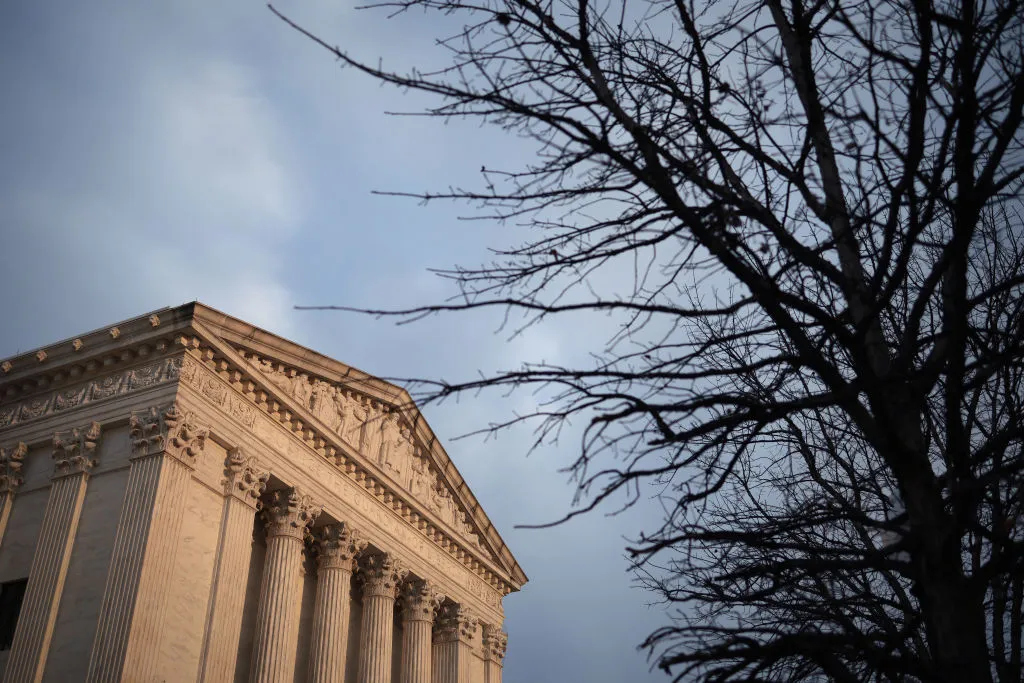Supreme Court declines to take action on Trump’s request to fire Fed governor for now


The Supreme Court on Wednesday announced that it will hear oral arguments in January on a request from the Trump administration to allow the president to fire Lisa Cook, a member of the Federal Reserve’s Board of Governors. In a brief, unsigned order, the justices delayed their decision on the administration’s plea to pause a ruling by a federal judge in Washington, D.C., that keeps Cook in office despite President Donald Trump’s efforts to remove her from the board.
The dispute is the latest chapter in an ongoing battle over the president’s power to remove the heads of independent federal agencies created by Congress. Under federal law, members of the Federal Reserve’s Board of Governors are appointed by the president and confirmed by the Senate to serve staggered 14-year terms, a design intended to prevent any one president from “stacking the deck” with his own nominees. They can also only be removed “for cause” – a term that the Federal Reserve Act does not define.
Then-President Joe Biden nominated Cook to the Fed board in 2023. But in late August, Trump – who has also criticized the chair of the Fed, Jerome Powell, for the board’s failure to lower interest rates – posted screenshots on the social media site Truth Social of a letter to Cook in which he fired her.
Trump cited allegations that Cook had committed mortgage fraud before joining the board by designating, within the space of two weeks, both a house in Michigan and a condo in Atlanta as her “primary residence” when taking out loans. (Cook has denied the allegations, and news outlets have reported on financial documents that may undermine the accusations.) Trump contended that the fraud allegations were “sufficient cause to remove” Cook from the board. “At a minimum,” he wrote, “the conduct at issue exhibits the kind of gross negligence in financial transactions that calls into question [Cook’s] competence and trustworthiness as a financial regulator.”
Cook went to federal court, where U.S. District Judge Jia Cobb issued an order that required the Fed to allow Cook to stay on the board while her challenge to Trump’s effort to fire her continued. In Cobb’s view, Cook was “substantially likely” to win on her claim that Trump’s efforts to dismiss her violated federal law because he did not have “cause” to do so. “The “for cause” requirement, Cobb reasoned, “does not contemplate removing an individual purely for conduct that occurred before they began in office.”
Cobb also concluded that Trump likely violated Cook’s constitutional rights when he fired her. Cook, Cobb said, had a property interest in her position as governor; therefore, she wrote, Cook was entitled to notice and an opportunity to be heard before she could be removed from that position.
And Cobb disagreed with the Trump administration’s suggestion that she could not weigh in on whether the president was justified in trying to fire Cook. If a court is “confronted with a justification offered by the President that clearly does not fall within the President’s statutory authority,” she wrote, it has “responsibility to review” that determination. The government’s contention that it does not, she said, “would provide no practical insulation for the members of the Board of Governors.”
After the U.S. Court of Appeals for the District of Columbia Circuit turned down the government’s request to pause Cobb’s order while the litigation continues, U.S. Solicitor General D. John Sauer went to the Supreme Court on Sept. 18, asking the justices to intervene. Calling Cobb’s order “yet another case of improper judicial interference with the President’s removal authority,” Sauer dismissed the lower courts’ conclusion that Cook had a property interest in her position and therefore an entitlement to notice and a hearing before she could be fired “untenable,” adding that such a requirement “would wreak havoc on sensitive presidential decision-making.”
Finally, Sauer wrote, Cobb did not have the power to order the president to reinstate Cook to her position. Such a remedy would only be available if Congress expressly authorized it, he said, and nothing in the Federal Reserve Act or the Banking Act indicates that Congress did so for Fed governors. And in any event, Sauer emphasized, at this stage the Supreme Court only needs to make clear “that federal courts lack the power to issue preliminary injunctions reinstating removed officers.”
On Sept. 22, the court agreed to review the case of Rebecca Slaughter, a member of the Federal Trade Commission whom Trump attempted to fire earlier this year despite a federal law providing that FTC commissioners can only be removed for “inefficiency, neglect of duty, or malfeasance in office.” The court granted the Trump administration’s request to pause a ruling by another federal judge in Washington, who had barred Trump from firing Slaughter. The justices also directed the litigants to discuss whether, even if federal officials are improperly removed from their positions, federal courts have the power to order their reinstatement or retention.
In her brief, filed on Sept. 25, Cook told the justices that the mortgage fraud allegations were “flimsy,” “unproven,” and “conveniently timed following the President’s criticism of the board’s policy decisions.” In light of this dispute over the veracity of Trump’s allegations, she wrote, there is no need for the court to step in now, because it might not have to do so at all if the allegations against her are ultimately shown to be baseless.
But the court should also not intervene, Cook continued, because Trump is not ultimately likely to win. Although Trump asserts that he tried to fire Cook “for cause,” she said, he can only fire her for one of the “recognized causes for presidential removal of executive officers at the time the provision was enacted” – a test that he cannot meet. “The President’s contrary interpretation of ‘for cause,’” Cook argued, “would give him virtual carte blanche authority to fire any governor at any time—and thus would upend the Federal Reserve’s longstanding tradition of independence.”
And unlike cases like Slaughter’s, Cook suggested, there would be no need for a court to reinstate her to her position if she eventually prevails in her challenge, because she has never left office: She “has consistently received her salary and exercised her duties since the purported removal.”
In a brief order released to reporters by the court’s Public Information Office shortly before 11 a.m. EDT on Wednesday, the justices wrote that the Trump administration’s request to pause Cobb’s order “is deferred pending oral argument in January 2026” – indicating that, as a technical matter, they will hear oral arguments and issue a decision on the request for a stay, rather than on the underlying merits of the dispute (although the likelihood that a litigant will prevail is an important criterion in determining whether to grant a stay). The court also signaled that Trump and Cook would not file additional briefs on the merits of the dispute, as would normally be the practice when the court grants review. Instead, the justices directed the clerk of the Supreme Court, Scott Harris, to set a schedule for the filing of “friend of the court” briefs, as well as “any supplemental briefs responding to” those briefs.
The court’s order effectively leaves Cobb’s ruling in place – and prevents Trump from firing Cook – while the case moves forward in the Supreme Court.
Posted in Court News, Emergency appeals and applications
Cases: Trump v. Slaughter (Independent Agencies), Trump v. Slaughter, Trump v. Cook (Independent Agencies), Trump v. Cook